England’s fourth major hosepipe ban of summer came into force this morning as Thames Water activated restrictions for more than one million customers.
Homes served by the firm in parts of Oxfordshire, Gloucestershire, Wiltshire and Berkshire were hit by the ban following one of the driest springs on record.
It comes despite three days of heavy rain and thunderstorms, which have not been enough to replenish reservoir and groundwater levels to the required levels.
Postcodes beginning with OX, GL, SN, RG4, RG8 and RG9 now have restrictions – although London, which is also served by Thames Water, has avoided the ban.
The Reading-based company has asked 1.1million customers not to use hosepipes, including for cleaning cars, watering plants, filling pools or cleaning windows.
The ban follows Southern Water activating restrictions for Hampshire and the Isle of Wight yesterday. That followed other bans implemented by South East Water for parts of Kent and Sussex last Friday, and in the Yorkshire Water region since July 11.
But Gary Carter from the GMB trade union criticised the new restrictions amid rising water bills, adding: ‘Thames Water lost 200billion litres of water through leaks last year. That’s 570million litres wasted every single day – the worst in the country.
He claimed the union’s workers at the company have ‘had their hands tied behind their backs by crumbling infrastructure and non-existent investment’, adding; ‘For Thames Water to now impose a hosepipe ban while bills rocket is disgraceful.’
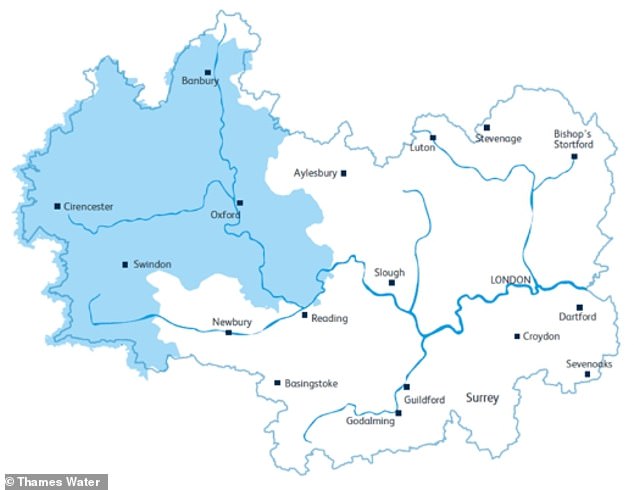
Thames Water has activated a hosepipe ban from today for customers in the blue shaded areas

Racegoers smile despite torrential rain at Royal Windsor Racecourse in Berkshire yesterday
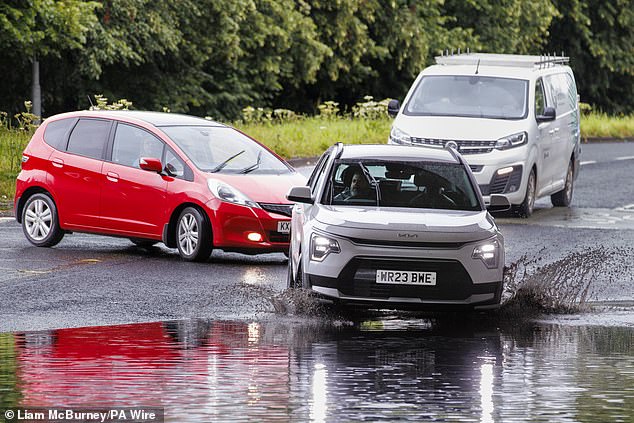
Drivers navigate through a flooded road in an underpass on Blacks Road in Belfast yesterday
Heavily-indebted Thames Water has been battling to secure funding to shore up its creaking finances and stave off temporary nationalisation by the Government.
Liz Stephens, professor of climate risks and resilience at the University of Reading, said of the restrictions: ‘This hosepipe ban is coming into place a whole month earlier in the year than the most recent hosepipe ban in 2022.
‘As a result the impact on individuals may be more profound, especially if we experience further heatwaves during the rest of the summer.
‘The UK has been experiencing drier-than-average conditions since January, and while this low rainfall might not be as severe as in 1976, the increased population puts more demand on water resources.’
Announcing the ban on July 14, Thames Water’s strategic water resources director Nevil Muncaster said: ‘This has been a challenging spring and summer with big spikes in customer demand during hot dry days and very little rainfall to replenish local supplies in the Thames Valley.
‘Given the continued warm, dry weather we do not anticipate that the situation will improve any time soon so we have to take action now.
‘Every drop of water we use comes from the environment and we have to balance protecting this while taking out the water needed to top-up reservoir levels.
‘That is why we have had to make to the difficult decision to implement a hosepipe ban to make sure there’s enough water for customers’ essential needs and to protect rivers.’
Thames Water is the latest company to activate a ban after the UK experienced its warmest spring on record and the driest in more than 50 years. It was the warmest June on record in England.
The firm said it had seen daily demand for water in Swindon and Oxfordshire reach levels last seen during the 2022 drought.
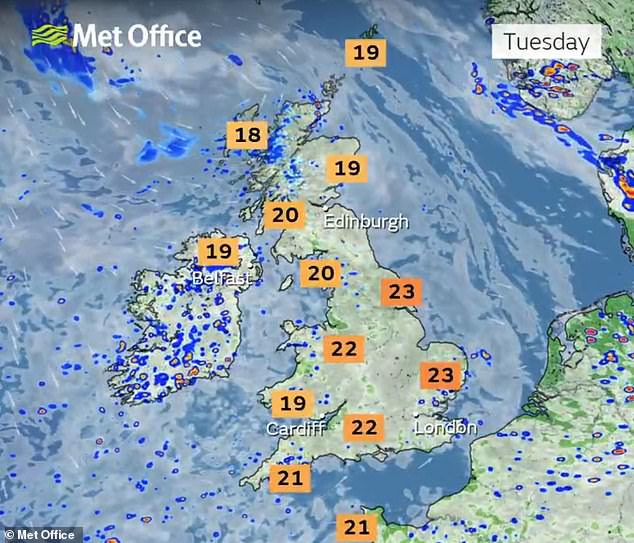
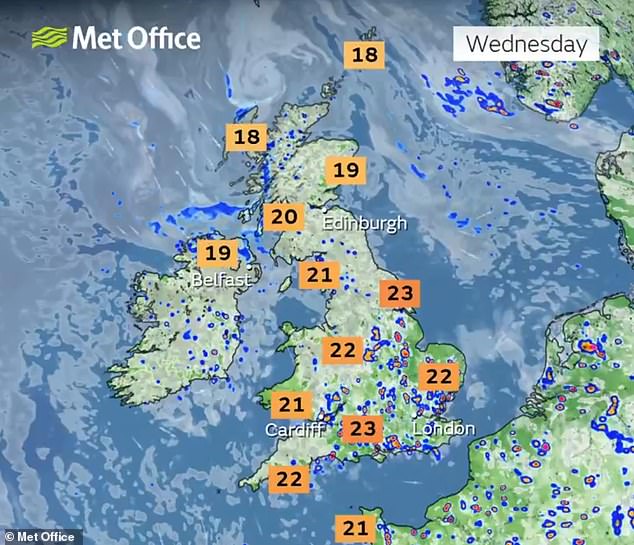
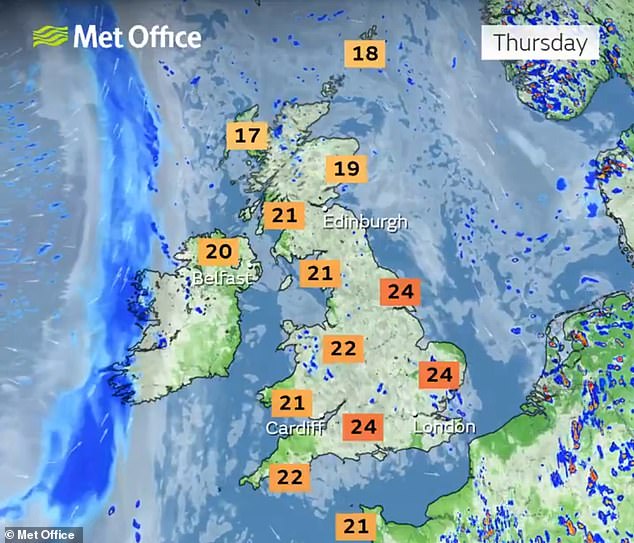
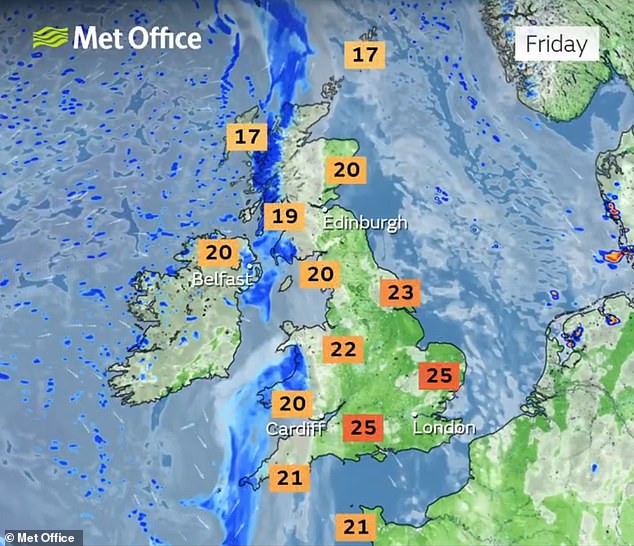
A statement said: ‘Water abstracted from the River Thames for this area is stored at Farmoor reservoir in Oxfordshire. If as is expected, the warm, dry weather continues the company anticipates that reservoir levels at Farmoor will continue to drop.
‘Further, river levels are below average for the time of year, which limits how much water can be sourced from the River Thames to top up the reservoir.
‘In the Cotswolds, aquifers which feed the River Thames are fast draining and the prolonged low rainfall also limits how quickly they can be refilled, further restricting how much water the company can source for reservoir storage.’
The Environment Agency placed the areas covered by Thames Water into the ‘prolonged dry weather category’ and the water company says its drought plan was designed to mitigate the risk of further impact on water supplies and ensure taps can keep running.
Businesses which use water as a core part of their purpose, such as garden centres and car washes, are exempt.
The ban comes as conditions remain unsettled today following three consecutive days of heavy rain, thunderstorms and flooding.
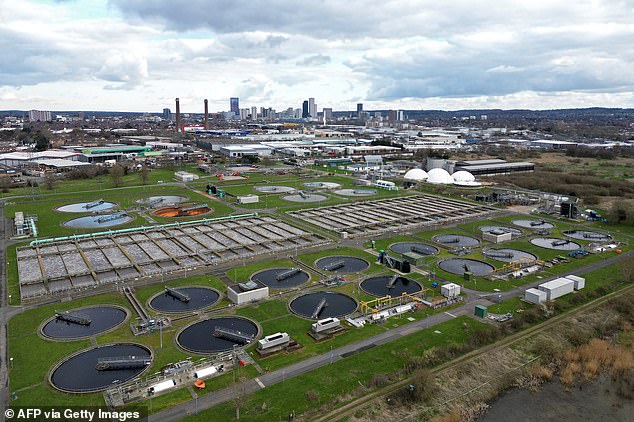
Thames Water’s Beddington Sewage Treatment Works near Croydon in South London (file)
The Environment Agency has 18 flood alerts in place for England today, while the Scottish Environment Protection Agency has 16 alerts and three warnings .
Today will bring rain in western Scotland, where a yellow warning was in place this morning. A mixture of sunny spells and scattered showers will be seen elsewhere.
Met Office meteorologist Tom Morgan said: ‘Tuesday is not looking as unsettled. The showers won’t be quite as widespread or indeed as heavy as they have been.
‘Nonetheless, there will be some showers or longer spells of rain for Scotland in particular, the west, (and) northwestern parts of England as well.
‘But many parts of England and Wales (will be) actually getting away with a fairly reasonable day with some dry periods.
‘And if the sunshine does break through that cloud at times, well, we might see temperatures reach 24C or 25C.’
In Scotland, all trains between Inverness and Kyle of Lochalsh in the Highlands were suspended today after the tracks were submerged by floodwater when silt was washed onto the line at Achanalt.












